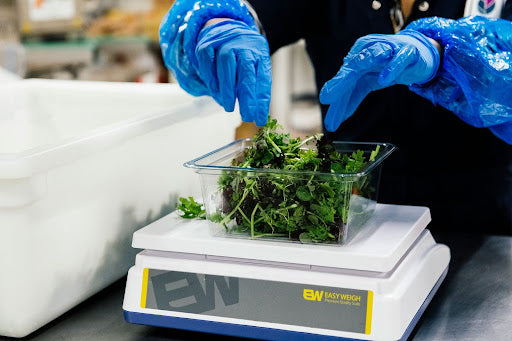
Have you also felt excited about stacked—crunchy, teeny radish shoots spilling out of a baguette bread like party confetti? Suddenly, all of us — from fine-dining cooks to café chefs to weekend dinner preparers — were crazed about these small greens. And not any microgreens. The hyperlocal variety. Raised around the corner, picked within hours, and exploding with flavor, you can't find grocery-store greens trucked in from the other side of the country. It is not about looks anymore. It is about taste, freshness, and versatility.
So, what's behind this food trend for hyperlocal microgreens? It's more than a fad. Sure, it's flavor, but it's also sustainability, narrative, and taking back control over what we eat.
Let's explore why chefs are addicted to it and why it's more than a beautiful garnish on the plate.
The Rise of the Microgreen Movement
Let's take a step back. Microgreens initially began appearing in upscale California restaurants during the '80s. At that time, they were regarded as a luxury—a bit of fancy frill for presentation purposes. But eventually, chefs realized that microgreens weren't just pretty. They had a punch. They had boldness. They had serious culinary potential
Jump forward to today, and microgreens have become mainstream. They've stepped off haughty plates of haute cuisine and onto casual brunch establishments and neighborhood cafés, and everyone's in on the action. Why? Because they pay off like few other ingredients do. These greens are not only beautiful to behold — they pack a serious flavor punch. Picture a punch of citrus in one leaf of sorrel microgreens or the gradual spice that unfurls in mustard shoots. Its flavor is sophisticated.
And don't forget the diversity. Microgreens are available in dozens of varieties — arugula, radish, basil, sunflower, cilantro, amaranth, beet — each with its own taste, texture, and color. They're flexible, memorable, and scalable. Which is precisely why chefs no longer reserve them for the finishing flourish. They're constructing dishes around them.

Why Chefs Are Going Hyperlocal
So, where do hyperlocal farms come in? Here’s the thing: when it comes to microgreens, freshness isn’t just nice — it’s everything.
Due to their size and fragile nature, microgreens are very fragile. The longer they're shipped, the less fresh, the less colorful, and the less nutritious they are. That's why chefs are increasingly looking to local urban farms for supply. When the greens are produced right in your city — better still, right down the street — they can be harvested for the kitchen in 24 hours. Even less sometimes.
This hyperlocal method isn't simply about convenience. It's an obsession with quality. It's the distinction between a wilted garnish and a living, bright ingredient that quite literally springs off the plate.
And there's a larger story here, too—one of sustainability. Hyperlocal sourcing eliminates transportation emissions by a huge amount, minimizes packaging waste, and keeps money in the pockets of small, community-oriented farms. It's a means for chefs to lower their impact while having more control over their ingredients.
Detroit-based chef Marcus V., who works closely with local growers, summed it up best: “Working with hyperlocal microgreens isn’t just a culinary choice — it’s a climate-conscious one. We’re feeding people and protecting the planet at the same time.”
The Microgreen Advantage
Flavor Bombs in Small Packages
Let's discuss flavor — because these greens don't play around.
Microgreens are small, but they're packed with stacked flavors: spicy, sweet, citrusy, nutty, earthy — you name it. Chefs adore them because they bring complexity to dishes without dominating the main ingredients.
Some of the most requested varieties we're seeing include
-
Radish: peppery, sharp punch
-
Arugula: subtle spice with grassy undertones
-
Basil: fragrant, sweet, and slightly spicy
-
Sunflower: nutty and crunchy with a fresh green taste
And the beauty? They're incredibly versatile. Sprinkle them over avocado toast, top off a creamy soup, stuff them in wraps, or add a pop of color to a grain bowl. Microgreens add depth and texture to a dish without requiring center stage.
Nutrient-Dense Powerhouses
And it's not merely about flavor — these greens pack a nutritional punch.
Studies reveal that microgreens contain up to 40 times the nutrients that mature greens have. More vitamins, antioxidants, and minerals with every bite. In a health-conscious world where everyone's worried about their waistlines and wants flavor as well, this is an unbeatable proposition.
Chefs are increasingly incorporating microgreens into their dishes not for decoration, but for nutritional content. Think about a Caesar salad with kale microgreens for added texture and vitamin C, or a miso soup with daikon sprouts providing a punch of phytonutrients.

How Microgreens are Changing Menus
Plating With Precision
Plating is where the magic of microgreens truly happens.
Since they're so visually dramatic—delicate shoots, bright colors, fanciful forms — chefs employ them with surgical accuracy. A twist of pea shoot here, a dusting of ruby amaranth there. It's restraint with purpose.
The good thing about microgreens is that they provide both function and form. Microgreens can accentuate the shape of a protein, elevate the height of a flat dish, or add a last pop of color that brings the entire plate together. But it's not an exercise in excess — the greatest plates subtly employ microgreens, but with power.
It's edible design.
Greens With a Story
Today's diners don't just desire a great meal — they desire a story. They demand to know where their meal was sourced, who it was grown by, and how it made it onto their plate.
That's where hyperlocal microgreens come into the picture.
They're trackable. Transparent. Tangible. When you inform a guest that their salad topping was picked within 12 hours in a vertical farm just 3 miles from here, that counts. It builds a connection. And that connection is worth more than dollars but experience.
The farm-to-table movement isn't new. But hyperlocal greens elevate it to a whole new level — one that's accessible, repeatable, and truly thrilling.
Growing Hyperlocal: Microgreens and Urban Farms
How Urban Farms Are Making It Possible
Off the radar of this microgreen boom is a whispered agricultural revolution.
Urban agriculture is adopting vertical farming, hydroponics, and LED growth systems to produce crops in confined, efficient places —sometimes within the city centers, as close to home as can be. Those conditions are minutely controlled in terms of humidity, temperature, and light, so crops are reproduced uniformly year-round with no gaminess of older ways of cultivating.
This technology-driven method not only creates healthier greens but also enables farmers to fulfill demand more sustainably and with greater agility. It's also making it possible for direct-to-consumer platforms like Market Wagon to connect chefs and local growers more easily than ever before.
Urban farms aren't simply producing food —they're redefining the way cities feed themselves.
A Look at Planted Detroit’s Approach
Our Hyperlocal Mission
At Planted Detroit, we've always thought that greens should be as fresh-tasting as they are fresh-looking—and that begins with growing them differently.
Our greens are hydroponically grown, pesticide-free, and cultivated within a tightly controlled environment optimized for flavor and freshness. We only deliver on Wednesdays because that's when we harvest. No warehouse layovers. No middlemen. Just the freshest greens we can grow, shipped at their best.
It's all part of our hyperlocal mission: to bridge the distance between farm and fork — and make people love greens all over again.
Microgreens: Tiny Plants, Big Future

Why This Trend Isn’t Going Anywhere
By this point, you can safely call microgreens a fad — no, seriously, they're a fundamental paradigm shift in cooking, eating, and even the way we think about greens.
For cooks, they're a means to express themselves. For eaters, they're a narrative on the plate. And for everyone? They're a reminder that even the most modest ingredients are capable of great impact.
In the years to come, we anticipate microgreens going beyond the garnish and into center stage — in sauces, spreads, beverages, and beyond. As urban agriculture becomes more mainstream, these small plants will have a large impact on how cities remain nourished, healthy, and creative.
Taste the Difference in Every Leaf
Interested in giving it a shot yourself? Browse Planted Detroit's Microgreens Collection or look at our salad bundles that bring flavor, flair, and nutrition to the table effortlessly.
Whether you're a professional chef or a foodie at heart, there's no turning back once you experience the difference hyperlocal makes. Want a sneak peek behind the greens? Follow us on Instagram for daily farm news, recipe inspiration, and fresh drops. Or visit our YouTube channel for behind-the-scenes harvest footage and plating inspo from chefs in our community.
Let's grow something delicious — together.
